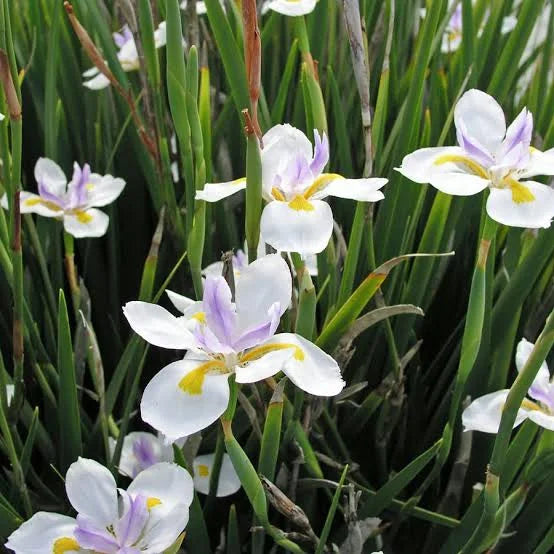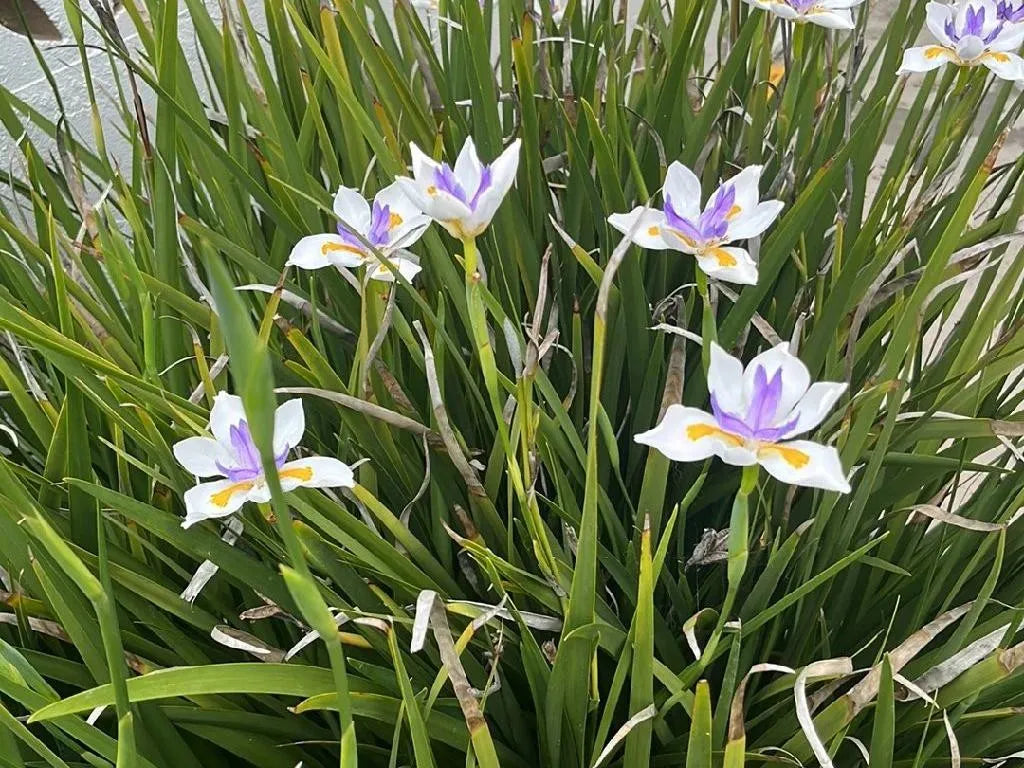Dietes grandiflora
Dietes grandiflora
Couldn't load pickup availability
Dietes grandiflora, commonly known as the large wild iris or African iris, is a low-maintenance, evergreen perennial native to South Africa. It is prized for its attractive, iris-like white flowers with yellow and purple markings that appear in flushes throughout the warmer months
- Appearance: This rhizomatous perennial forms large, dense clumps of long, slender, sword-shaped leaves that can reach up to 1.5 meters in height.
- Flowers: The delicate, iris-like flowers are white with prominent yellow nectar guides and attractive violet central segments. Though each flower is short-lived, the plant produces a succession of new blooms over a long season, from late spring through summer.
- Wildlife: The flowers attract bees and other pollinators.
- Sunlight: Dietes grandiflora grows and flowers best in full sun, though it can tolerate partial shade.
- Soil: It is adaptable to a wide range of soil types, including poor, dry soils, but prefers moist, well-drained soil. Once established, it is drought-tolerant.
- Watering: Water regularly, especially during the first year, to help the plant's root system become established. Once mature, it requires less frequent watering.
- Fertilizer: Feeding is generally not necessary, but a balanced liquid fertilizer applied in the spring can promote growth and blooming.
- Hardiness: It is considered hardy to half-hardy and can tolerate some frost. In colder areas, it may require a protective mulch during winter.
- Maintenance: Prune spent flower stalks to keep the plant tidy and remove any dead foliage. The plant is generally pest- and disease-free.
- Division: The easiest method of propagation is by dividing the rhizomes, which can be done at any time of year.
- Seed: You can also propagate the plant from seed. To improve germination, soak the seeds in warm water for a couple of days before planting in the spring or autumn
Price is for 5 seeds


Collapsible content
Fair Use Disclaimer
Our website may contain content not authorized for use by its owner but use of this material falls under the guidelines of fair use (They are for educational purposes only to show the plant only).
If you want to find our more or own any images displayed on our website and disagree with our assessment it constitutes 'fair use' please click here.


